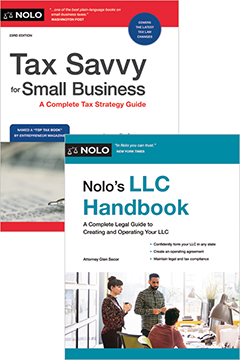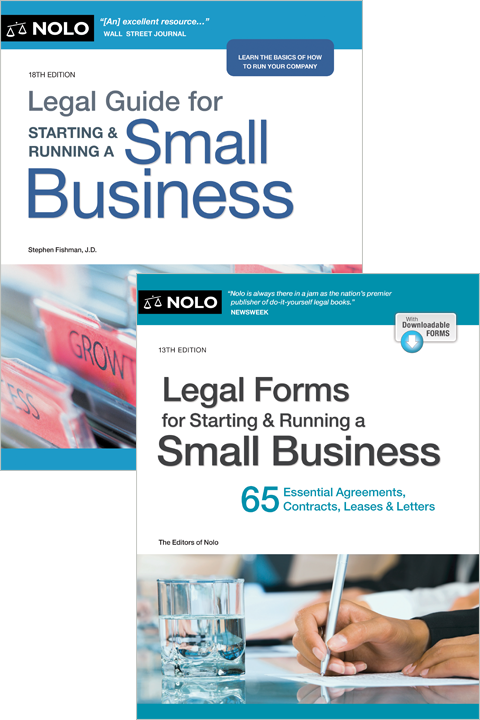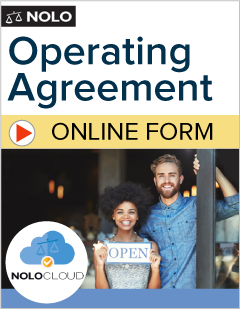If you want to team up and form a partnership in California, you’ll need to follow state and local rules for businesses. Follow these steps to choose and register your business name, draft a partnership agreement, and comply with tax and license requirements.
When you've started a business for profit with at least one other person, you've created a partnership (also known as a "general partnership"). You can create this unincorporated business structure even when there's no intent or written agreement to formalize the business relationship.
In California, like every other state, there are no formal filing or registration requirements needed to create a general partnership. However, you must still comply with registration, filing, and tax requirements applicable to any business. Follow the steps below to form a partnership in California.
- 1. Choose a Partnership Name
- 2. File a Fictitious Business Name Statement With Your County Clerk
- 3. Draft and Sign a Partnership Agreement
- 4. Apply for Licenses, Permits, and Zoning Clearance
- 5. Obtain an EIN, Register for State Taxes
- Next Steps for Your Partnership
- Getting Help With Forming Your Partnership
1. Choose a Partnership Name
In California, a partnership can use the last names of the individual partners or a fictitious business name (FBN)—sometimes called a "trade name" or "DBA" (short for "doing business as"). For example, suppose Dick Grayson and Barbara Gordon form a partnership called "Nightwing Oracle Productions." The name "Nightwing Oracle Productions" would be an FBN because it doesn't include "Grayson" and "Gordon," the partner's last names (Cal. Bus. & Prof. Code §§ 17900 and following (2023).)
If you plan to use an FBN, it should be distinguishable from (not the same as) the name of any other company currently on record in California. It's also a good idea to choose a name that's not too similar to another registered business because of common law and federal trademark law protections. If you start using a name that's too similar to another business's name in a way that would confuse customers, you could be sued for trademark infringement and be forced to change your name anyway.
To make sure your proposed business name is available, run a search in the following government databases:
- California Secretary of State business search, and
- United States Patent and Trademark Office's TESS database.
If you're not sure whether your business name is available to use, consider talking to a trademark attorney. They can tell you the advantages and risks of using your business name, and they can also do a trademark search for you.
2. File a Fictitious Business Name Statement With Your County Clerk
If you decide to use a trade name, California requires you to file an FBN statement in the office of the county clerk where you intend to do business. The California State Association of Counties provides a list of county websites where you can obtain more information and forms for filing an FBN statement. (Cal. Bus. & Prof. Code § 17913 (2023).)
Within 45 days of filing your FBN statement, you'll need to publish the statement in a county newspaper for four weeks. (Cal. Bus. & Prof. Code § 17917 (2023).)
Filing fees vary by county. You'll need to renew your statement every five years.
3. Draft and Sign a Partnership Agreement
A partnership agreement isn't a mandatory legal requirement for establishing a partnership. However, it's a very important step to ensure there are no misunderstandings between you and your partners. A well-drafted agreement will help you decide in advance how to handle certain situations.
Here's a list of some items that should be covered in your partnership agreement:
- each partner's contribution to the partnership
- the allocation of profits, losses, and draws
- the partners' authority and management duties
- voting rules for decision making
- how to admit new partners
- the withdrawal, death, or bankruptcy of a partner (called "buy-sell provisions"), and
- how to resolve disputes.
Even well-intentioned, honest partners can find themselves in a legal battle if they don't have a written partnership agreement memorializing their initial purposes. Your agreement can always be changed at a later date should circumstances or conditions change. For help drafting this document, see our article on creating a partnership agreement.
4. Apply for Licenses, Permits, and Zoning Clearance
Your business might need to obtain business or professional licenses depending on the type of business activity you're engaged in. For example, if your partnership offers accounting services, you must comply with state licensing requirements for accountants.
California provides a comprehensive database of every profession that requires a license by a partnership. You can find this information by using CalGold, a service of the California Governor's Office of Business and Economic Development.
In addition, local regulations—including licenses, building permits, and zoning clearances—might apply to your business. You'll need to check with your city and county governments for more information. For additional guidance, read our article about the legal requirements for starting a small business.
5. Obtain an EIN, Register for State Taxes
As a business, you have multiple federal and state tax obligations.
Obtain an EIN. Partnerships must obtain an EIN from the Internal Revenue Service (IRS). An EIN is a nine-digit number issued by the IRS to keep track of businesses. If your partnership has employees, you'll need to report wages to the IRS using your EIN. Registering for an EIN can be done online at the IRS website.
Register as an employer. If you have at least one employee, you must register with the California Employment Development Department (EDD) within 15 days of paying $100 or more in a calendar quarter. You can report and pay all employment-related taxes on a periodic basis using your EDD payroll tax account. The EDD also provides additional information on the different state payroll taxes on its website.
Register to pay sales tax. If you're a retailer selling goods in California, you need to register with the California Department of Tax and Fee Administration (CDTFA) to pay sales tax. You might need to pay use tax for goods that are stored, used, or consumed in California that aren't already taxed. You'll also need to pay local sales tax in addition to state sales tax. You can use the CDTFA online services to register your tax account and apply for a seller's permit.
You can find additional guidance on partnership taxes and filing requirements on the California Franchise Tax Board (FTB) website. Use the California Tax Service Center to navigate the various tax requirements, including income, payroll, sales, and use taxes.
Next Steps for Your Partnership
It is important to consider doing the following once you've created your partnership:
- Open a business bank account. Using your FBN and EIN, you should set up a bank account to keep your business and personal finances separate. Creating a separate business account will make it easier to track your partnership's income and expenses.
- Obtain general liability insurance. Because partners of a partnership are personally liable for all debts and obligations of the business, a general business liability insurance policy could be your only financial protection against unforeseen events. Having adequate business liability insurance can protect your business and personal assets if there's a lawsuit or other claim against your business. To learn more about the different policies, read our article on what types of insurance your small business might need.
- Report and pay taxes. Your partnership must file a Partnership Return of Income (Form 565). Each partner will also need to file a Partner's Share of Income, Deductions, Credits, etc. (Schedule K-1 Form 565). Because a partnership is a pass-through entity, each partner is responsible for paying their share of the partnership taxes. You can file these forms online with the FTB. Additionally, as discussed earlier, depending on your specific business activities, you could be required to report such items as payroll, sales, and use taxes.
Getting Help With Forming Your Partnership
If you have business experience and face simple legal requirements, you can probably start your partnership on your own. If you want to do the process yourself but are interested in some help and further education, check out Form a Partnership: The Complete Legal Guide, by Denis Clifford and Ralph Warner (Nolo). This book provides information on important topics like profit distribution and financial and tax liabilities as well as sample partnership agreements.
If you and your partners have any disagreements over how your partnership should be run or you run into obstacles applying for local licenses and registrations, you should talk to a business attorney. They can help you draft a partnership agreement, apply for local licenses and permits, and comply with employment and tax laws.
To read more about partnerships in general—including the difference between a general and limited partnership—see our section on partnerships. (And for information on other California business structures, review our section on starting a business in California.)
- 1. Choose a Partnership Name
- 2. File a Fictitious Business Name Statement With Your County Clerk
- 3. Draft and Sign a Partnership Agreement
- 4. Apply for Licenses, Permits, and Zoning Clearance
- 5. Obtain an EIN, Register for State Taxes
- Next Steps for Your Partnership
- Getting Help With Forming Your Partnership



